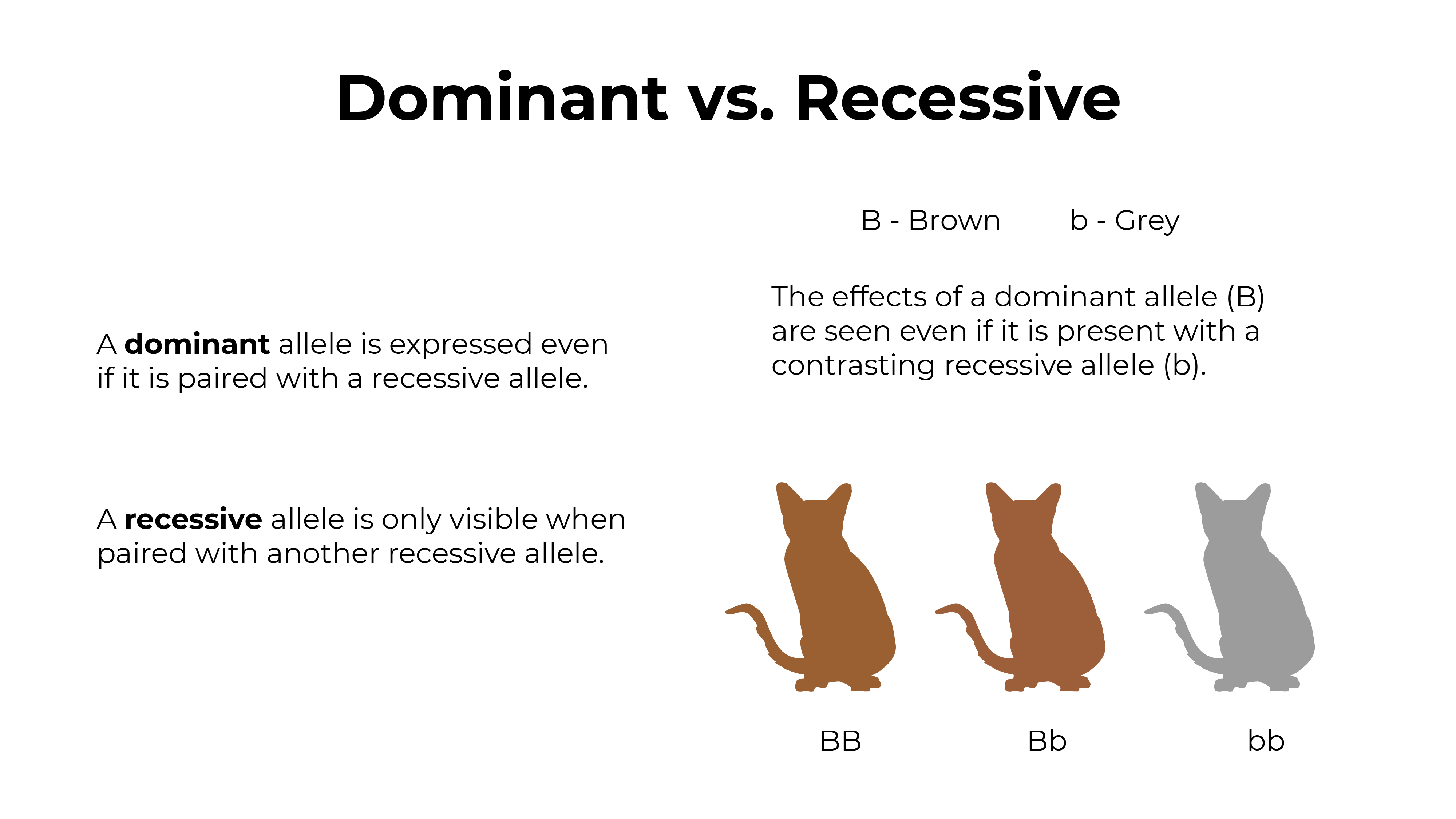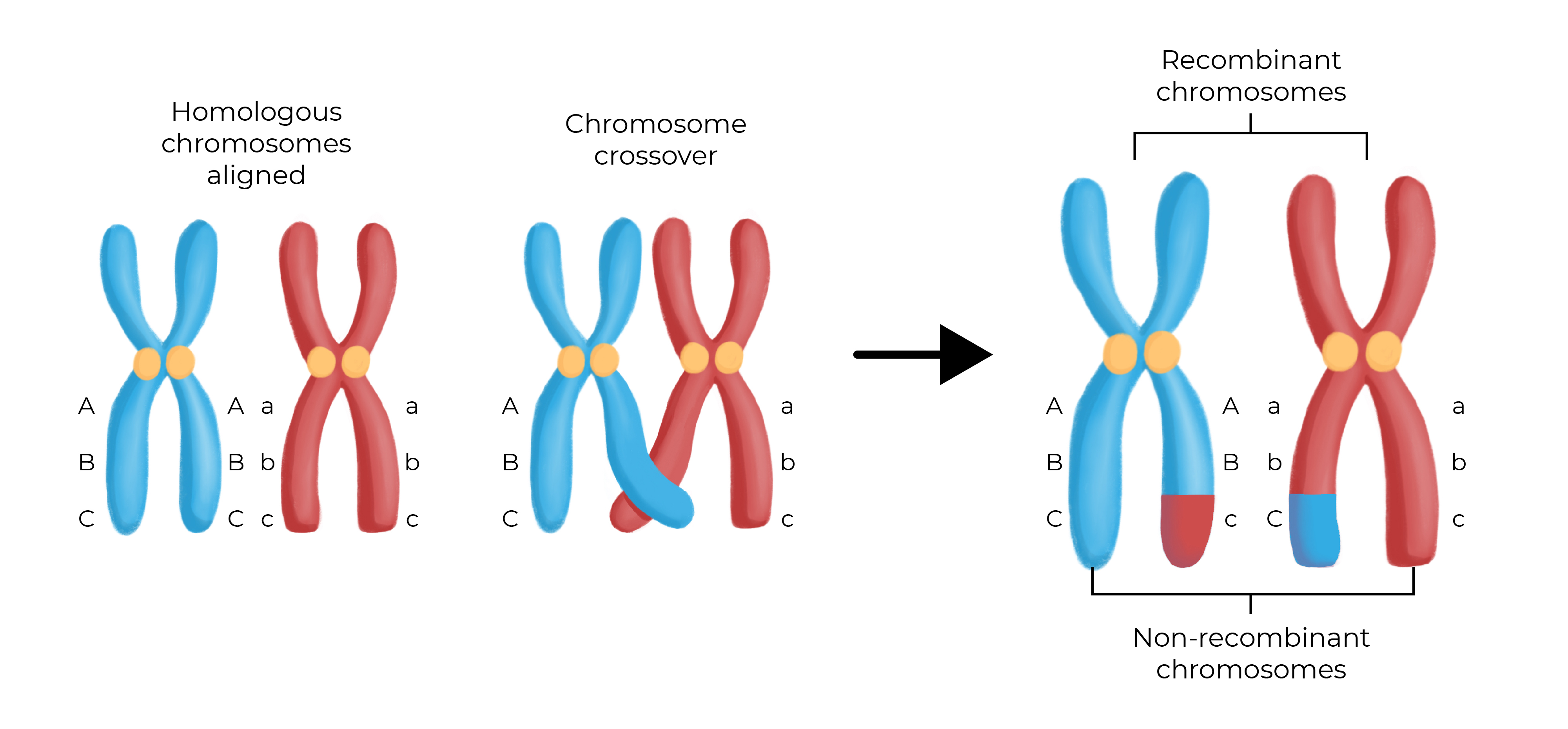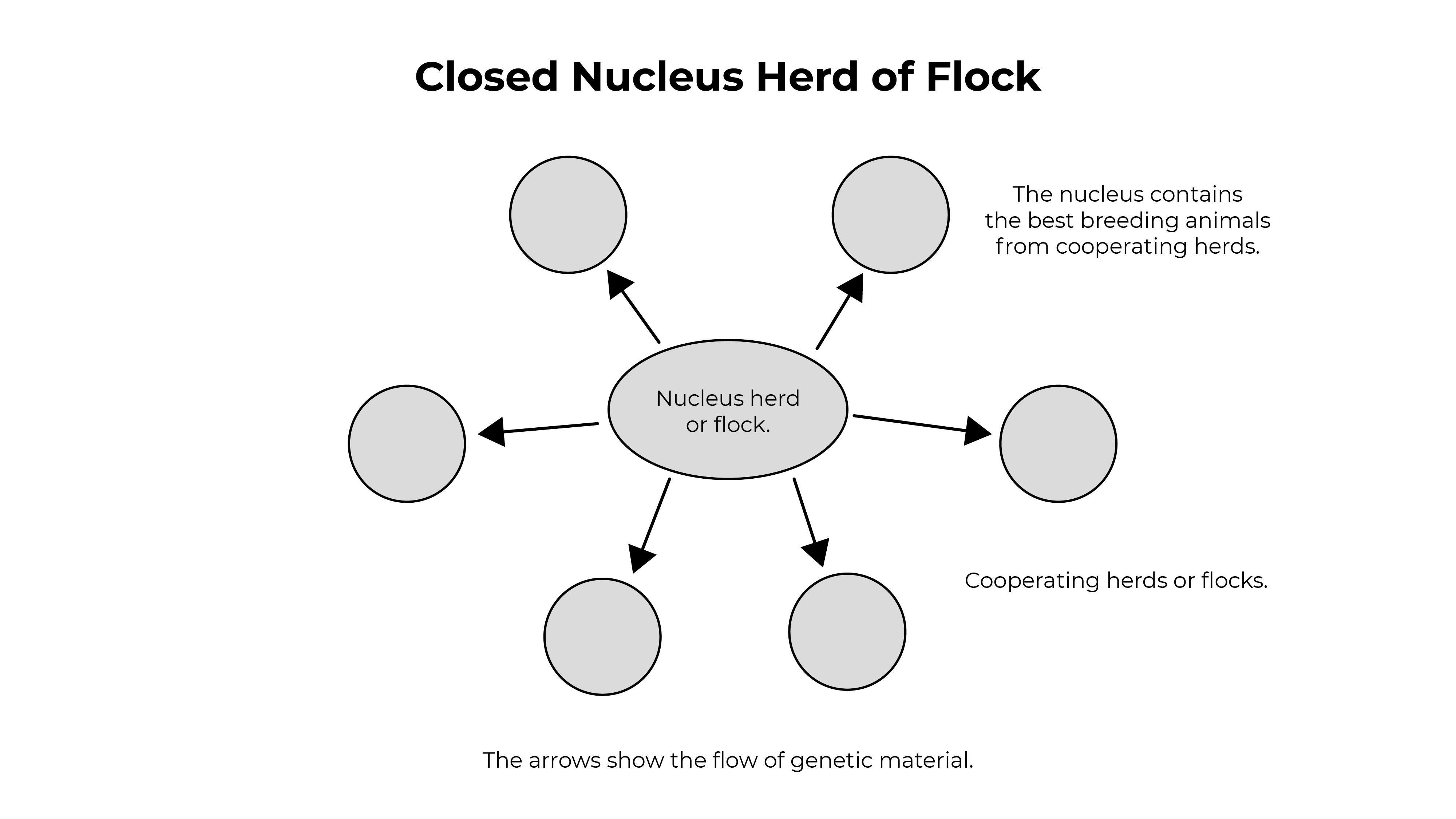8. Selective Breeding in Farm animals
By the end of this session you will be able to:
- Describe Mendelian inheritance.
- Explain the difference between dominant and recessive genes.
- Define heritable traits, and explain how pedigrees can be analysed.
- Explain selective breeding, also known as artificial selection.
- Define inbreeding, outcrossing, and hybrid vigour.
- Evaluate the role of a nucleus breeding herd.
What is selective breeding?
This is the planned breeding of animals with desirable traits/characteristics in an attempt to produce offspring with similar desirable characteristics or with improved traits.
This can also be called ‘artificial selection’.
This conscious decision to breed farm animals started in the early 18th century, pioneered by Robert Bakewell.

Robert Bakewell
ROBERT BAKEWELL was born in 1725 at Dishley, Leicestershire, England. He died October 1, 1795, at Dishley.
Bakewell was an agriculturist who revolutionized sheep and cattle breeding in England by methodical selection and inbreeding.
He was the first to improve animals for meat production and carcass quality.

Natural selection
This is when a certain traits have adapted to survive in their environment.
The species that survive with these traits then pass their genetic information on to their young.
The species that have less desirable traits do not survive as easily, so often become extinct.
Darwin’s theory of evolution

Adaptation
- Adaptation is an adjustment in a population to survive.
- This can be behavioural.
- This could include a behaviour allowing the animal to escape a predator more easily.
- This could be physical.
- The animal could grow taller legs allowing the animal to run faster.
Mendelian inheritance
Gregor Mendel, an Austrian monk studied genetics.
“Mendelian inheritance refers to patterns of inheritance that are characteristic of organisms that reproduce sexually."

He discovered the fundamental laws of inheritance.
He deduced that genes come in pairs and are inherited as distinct units, one from each parent.
Mendel tracked the segregation of parental genes and their appearance in the offspring as dominant or recessive traits.
The 3 rules of inheritance
- Mendel’s Law of Segregation
- Mendel’s Law of Dominance
- Mendel’s Law of Independent Assortment
Mendel’s Law of Segragation
The Law of Segregation, states that individuals possess two alleles and a parent passes only one allele to his/her offspring.
One allele is given by the female parent and the other is given by the male parent.
The two factors may or may not contain the same information.
If the two alleles are identical, the individual is called homozygous for the trait.
If the two alleles are different, the individual is called heterozygous.
Mendel’s Law of Dominance
In a heterozygote, the allele which masks the other is referred to as dominant, while the allele that is masked is referred to as recessive.

Dominant and Recessive genes in farm animals
In cattle, the allele that causes horns to grow is recessive. The hornless, or polled, allele is dominant. There are additional genes that affect horn-like growth on an animal's head.

| Species | Dominant Trait | Recessive Trait |
| Cattle | Black Hair Coat | Red Hair Coat |
| Polled | Horns | |
| White Face | Solid Color | |
| Solid Color | Irregular white spotting | |
| Red | Yellow | |
| Cloven hooves | Mule feet | |
| Sheep | Hairy fleece | Wooly fleece |
| White wool | Black wool | |
| Brown eyes | Blue eyes |
Mendel’s Law of Independent Assortment
Mendel's law of independent assortment states that genes do not influence each other with regard to the sorting of alleles into gametes: every possible combination of alleles for every gene is equally likely to occur.
That is, separate genes for separate traits are passed independently of one another from parents to offspring.
HOWEVER: an exception!
Some allele combinations are not inherited independently of each other. Genes that are located on separate non-homologous chromosomes will always sort independently. However, each chromosome contains hundreds or thousands of genes organized linearly on chromosomes, like beads on a string.
The segregation of alleles into gametes can be influenced by linkage, in which genes that are located physically close to each other on the same chromosome are more likely to be inherited as a pair.
However, because of the process of recombination, or “crossover,” it is possible for two genes on the same chromosome to behave independently, or as if they are not linked.
Linked genes can be separated by recombination
When two genes are located in close proximity on the same chromosome, they are considered linked, and their alleles tend to be transmitted through meiosis together.

Recombination
The process of crossover, or recombination, occurs when two homologous chromosomes align during meiosis and exchange a segment of genetic material. Here, the alleles for gene C were exchanged. The result is two recombinant and two non-recombinant chromosomes.

What are ‘heritable’ traits?
Animal breeding is based on the fact that traits of parents are reflected more or less in their offspring. This is caused by the fact that traits are more or less heritable and that 50% of the DNA, comprising the heritable ability for the traits of an animal, is passed from a parent to its offspring.
In animal breeding, potential parents are selected for certain traits and the best ones are indeed used as parents. In this way, the next generation will be genetically improved for the desired traits.
Heritability
Heritability is a measure of how well differences in an animal’s genes account for differences in their traits. A heritability close to one indicates that almost all of the variability in a trait comes from genetic differences, with very little contribution from environmental factors.
Inbreeding, outcrossing and hybrid vigour
Inbreeding
This is the breeding of two related individuals.
Animals are not considered related past 5 generations.
Can you think off the advantages and disadvantages relating to inbreeding?
Inbreeding
Advantages
Disadvantages
Inbreeding
Advantages
- Similar characteristics in youngstock (uniformed)
- Unwanted genes can be carried due to recessive genes
- Good breeding lines
Disadvantages
- Loss of genetic variation
- Loss of bad genes
- More prone to disease
Line Breeding and Cross breeding
Line Breeding
This is a form of inbreeding. It is the breeding of animals with the same blood lines but not closely related.
Cross Breeding
Breeding of male and female from separate families.
Outcrossing
Outcrossing or outbreeding is the technique of crossing between different breeds with no common ancestors.
This is the practice of introducing unrelated genetic material into a breeding line.
It increases genetic diversity, thus reducing the probability of an individual being subject to disease or genetic abnormalities.

Task
In pairs, name as many recognised crossbreeds currently being used on farms in the UK.
Answers: List of common crossbreeds
SHEEP
- English/Scottish/Welsh Mule
- English/Scottish/Welsh Halfbred
- Suffolk x Speckle Face
- Suffolk x Mule
- Texel x Mule
CATTLE
- Hereford x Friesian
- Holstein x Friesian
- Jersey x Friesian
- Limousin x Friesian
- Simmental x Friesian
Hybrid Vigour
Hybrid vigour is the degree to which the crossbred progeny of a particular mating are better than their two parent breeds.
While hybrid vigour can be used to enhance traits such as growth rate, it actually has a far greater impact on traits of low heritability, such as fertility, milk yield and longevity.
These traits, which are difficult to enhance through pure breeding, are greatly enhanced through crossbreeding – leading to improvements in calf survival, reproductive efficiency and calf growth rates.

Breeding programmes: The Nucleus breeding herd
Breeding programmes have performance recording schemes which assist breeders to identify animals with superior breeding potential and encourage their wider use within the industry.
These schemes are required because the performance of livestock is dependent on both their breeding and a host of environmental factors such as feeding and management.
What do recording schemes do?
Recording schemes attempt to separate the effects of breeding and the environment on animal performance to enable the identification of those animals whose breeding is truly superior.
Performance records make sure that breeding animals are selected on the basis of objective measurements.

The Nucleus Breeding Herd/Flock
A nucleus bull-breeding herd is an elite herd of cattle / sheep or pigs that is maintained on a commercial property specifically to breed sires for the commercial herd.
There are 2 types, open and closed.
In a closed system, the flow of animal is in one direction only, from the nucleus herd in to commercial farms.
In an open system, the best progeny who perform well in the commercial herd can move back to be part of the nucleus herd.


Conclusion
You will now have the basic knowledge of the following:
- Mendelian inheritance
- The difference between dominant and recessive genes
- Heritable traits
- Artificial selection
- Inbreeding, outcrossing, and hybrid vigour
- Nucleus breeding herd.